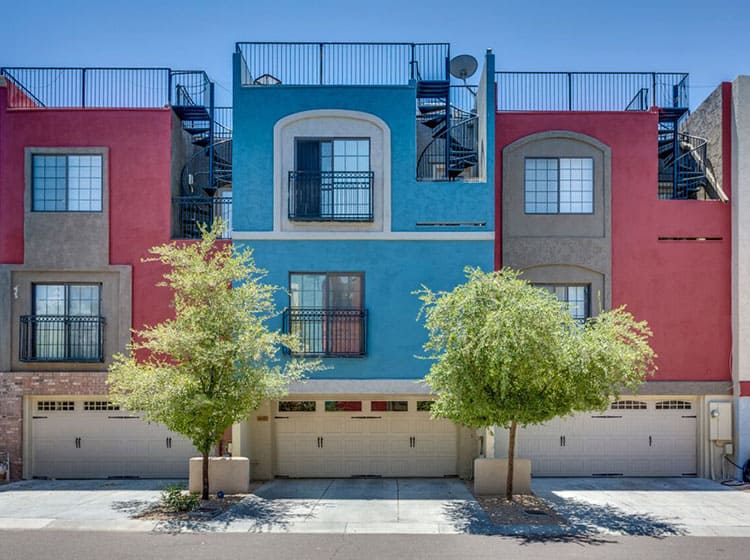Gain Insights Right Into Just How Weather Can Impact The End Result Of Your Exterior Painting Project, Guaranteeing A Professional Finish
Gain Insights Right Into Just How Weather Can Impact The End Result Of Your Exterior Painting Project, Guaranteeing A Professional Finish
Blog Article
Post Author-Kidd Sloth
Understanding just how weather can influence the end result of an outside painting undertaking is extremely important for achieving a remarkable coating. From temperature level fluctuations modifying paint bond to humidity levels influencing drying out times, each aspect of weather plays a significant function in the success of your task. Furthermore, https://www.architecturaldigest.com/story/how-to-paint-kitchen-cabinets and rainfall can present unexpected challenges that might compromise the high quality of the final result. As we browse through the subtleties of climate's impact on external painting, it ends up being apparent that careful planning and tactical timing are crucial for guaranteeing an expert and resilient result.
Perfect Temperature Variety for Paint
When thinking about outside painting jobs, the perfect temperature level range plays an important duty in accomplishing optimal outcomes. Painting in the appropriate temperature problems makes sure that the paint adheres properly to the surface, dries uniformly, and cures efficiently. Usually, the advised temperature level range for exterior paint is in between 50 to 85 degrees Fahrenheit.
Painting in temperature levels listed below 50 degrees Fahrenheit can cause problems such as bad paint adhesion, long term drying times, and an enhanced chance of cracking or peeling off.
On the other hand, paint in temperature levels above 85 degrees Fahrenheit can trigger the paint to completely dry also rapidly, leading to blistering, bubbling, and an irregular finish.
To achieve the most effective results, it is important to inspect the weather prediction prior to beginning an outside paint job. Preferably, goal to paint during light climate condition with moderate temperature levels and reduced humidity levels.
Effects of Humidity on Paint Drying
Moisture levels substantially influence the drying process of paint put on exterior surface areas. High humidity can prolong the drying time of paint, leading to potential problems such as leaking, spotting, or even the development of bubbles on the repainted surface. Excess dampness in the air slows down the evaporation of water from the paint, preventing the treating process. closets of tulsa is particularly bothersome for water-based paints, as they rely on dissipation for drying out.
On the other hand, low moisture degrees can additionally impact paint drying out. Exceptionally completely dry problems might cause the paint to completely dry as well swiftly, leading to inadequate bond and a rough coating. In such cases, including a paint conditioner or splashing a great haze of water in the air can aid control moisture levels and enhance the paint outcome.
To make certain optimal drying out conditions, it is recommended to paint when the humidity degrees vary in between 40% and 50%.
Tracking humidity degrees and taking proper actions can assist achieve a smooth and sturdy paint finish on outside surface areas.
Wind and Precipitation Factors To Consider
Wind rate and rainfall are vital variables that significantly impact the success of an outside paint task.
When it concerns wind, both speed and direction are necessary factors to consider. High wind speeds can create paint to dry as well rapidly, causing a subpar completed with potential concerns like fracturing or uneven appearance. Additionally, wind can lug particles that might abide by the damp paint, resulting in imperfections. As a result, painters should aim to work on days with light to modest winds for ideal painting problems.
On the other hand, rainfall, whether rain or snow, can be incredibly damaging to the result of an outside paint project. Moisture from rainfall can impede paint attachment, triggering peeling and bubbling over time. It is critical to prevent paint throughout rainy or snowy weather condition to make certain the longevity and high quality of the paint task. Painters ought to also permit ample time for the surface area to completely dry thoroughly after any precipitation before commencing or resuming the paint process.
Verdict
Finally, weather play a considerable duty in the result of an exterior painting job. The ideal temperature array, humidity levels, wind speed, and precipitation all add to the success or failure of the paint task.
It is necessary to consider these aspects and plan appropriately to guarantee appropriate paint attachment, drying times, and overall high quality of the ended up product.
